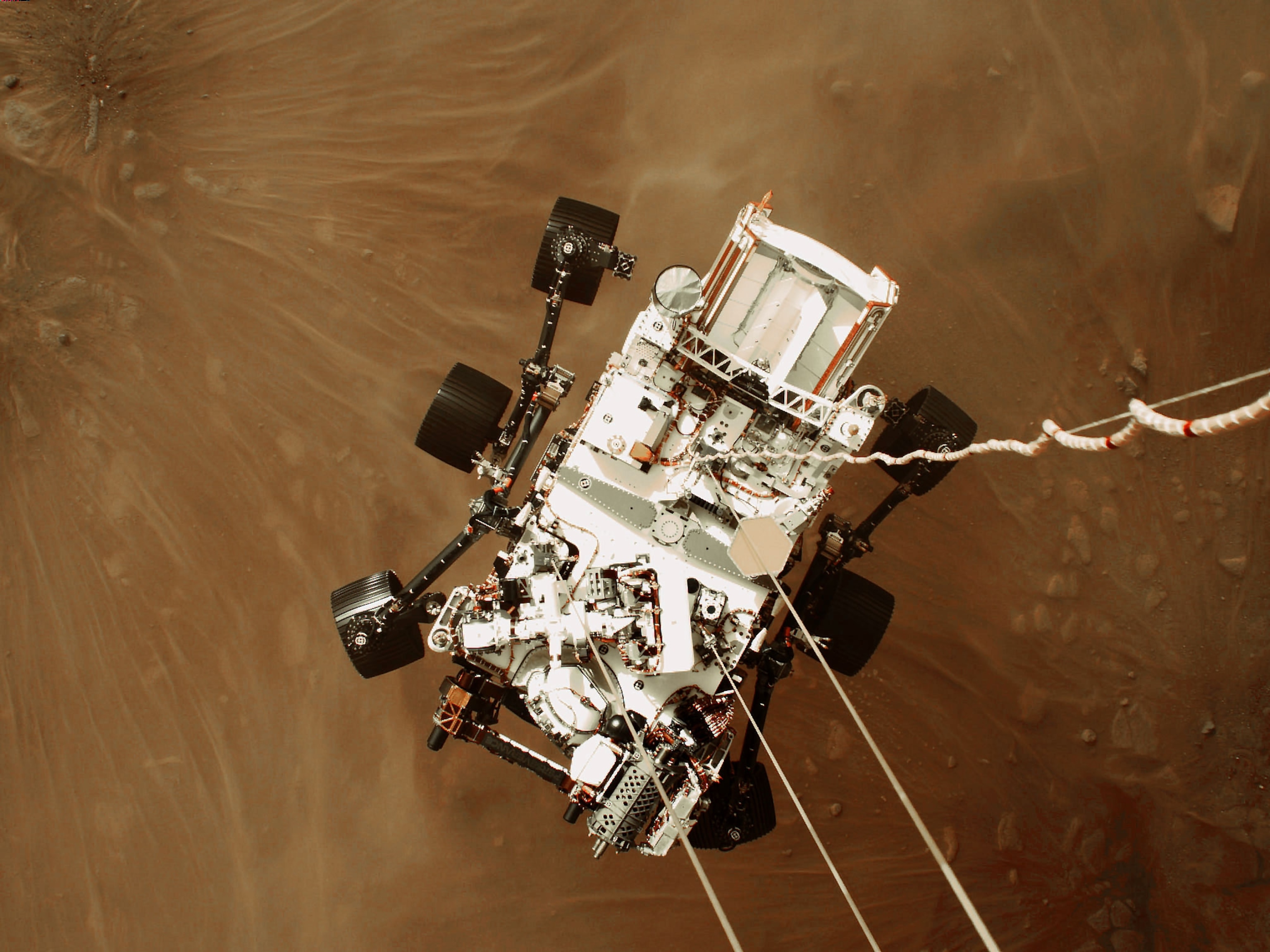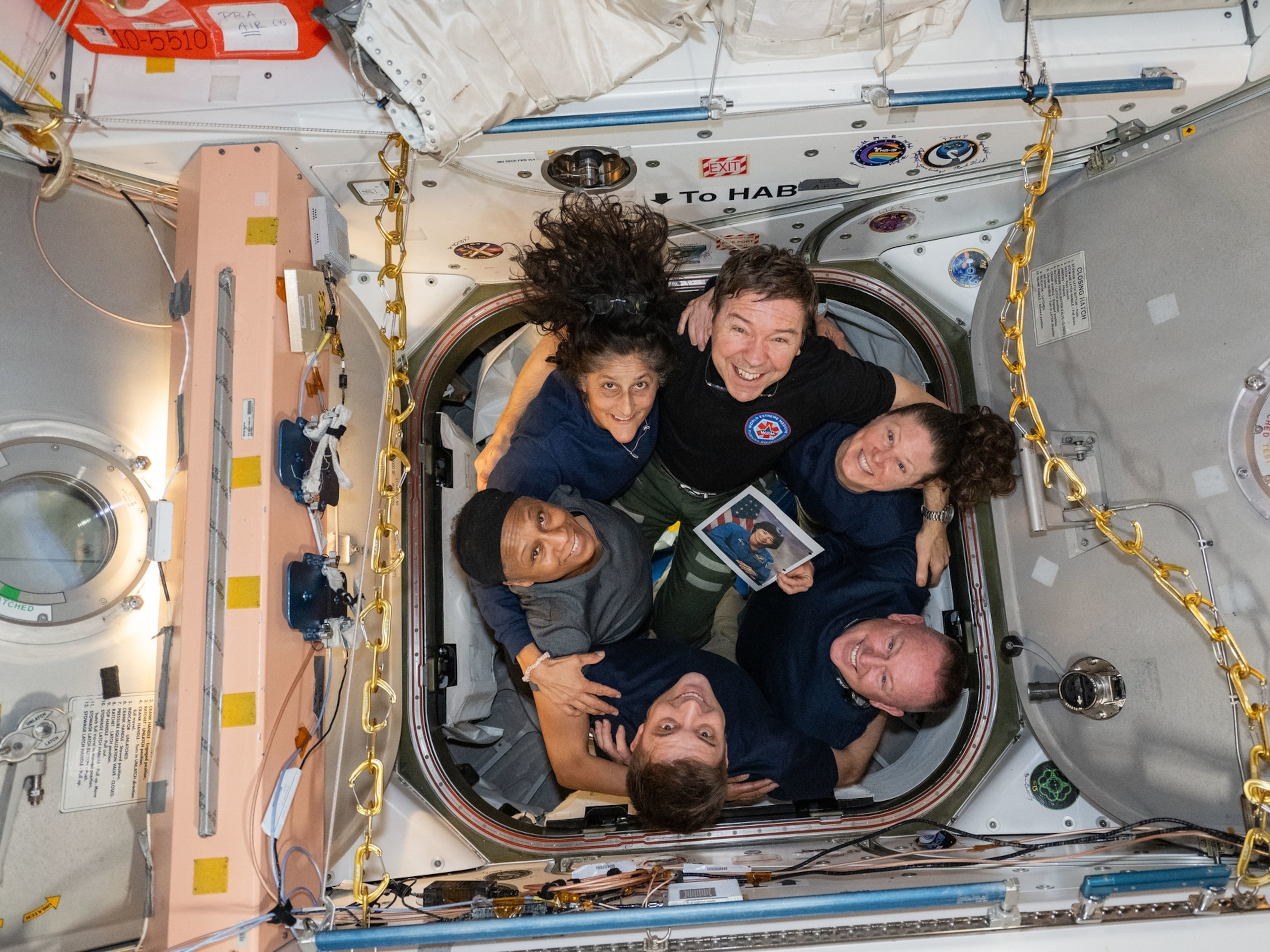For the first time in human history, we can watch the moment a rover sets its wheels down on Mars.
Released today, the astonishing video was filmed as the one-ton Perseverance rover dove toward Jezero Crater on February 18. Until now, scientists and engineers couldn’t watch a Mars landing with their own eyes—they could only read a record of a spacecraft’s movements remotely, in a string of data relayed as it plummeted through the thin Martian atmosphere.
“These are days that I’ve waited years for—it almost doesn’t seem real,” says Adam Nelessen of NASA’s Jet Propulsion Laboratory, who is on the team responsible for the descent imagery. “It looks like it’s straight out of a science fiction movie.”
NASA also released a 360-degree panorama taken from the surface on February 20, plus other new images from the surface and orbit, as well as audio captured from the surface in which a brief Martian breeze is audible.
A fiery plunge to the surface
The Perseverance rover reached Mars after traveling more than 300 million miles over the past seven months. It then used a parachute to slow its descent through the planet’s atmosphere and used what’s known as a sky crane to gently touch down inside Jezero Crater, which held a deep lake billions of years ago. The rover’s mission is to seek signs of ancient life in the crater’s rocks and sediments, and to collect rock samples that will one day be returned to labs on Earth for detailed scrutiny.
“We have very strong evidence that Mars could have supported life in its distant past,” says project scientist Ken Farley of the California Institute of Technology. “The question is, was it ever a living planet?”
Answering that question requires a healthy Mars rover, which means NASA had to find an innovative way to get the hefty, six-wheeled robot safely to the surface. In 2012, the same sky crane landing technology delivered the Curiosity rover to Mars’s Gale Crater. But this is the first time scientists and engineers have been able to see the sequence in action, as it would look from Mars.

Half a dozen off-the-shelf cameras captured about 23,000 images during the rover’s plunge through the Martian atmosphere. “These are [cameras] that you could go and simply buy,” Nelessen says. “But the space environment provides some additional challenges, and there were some modifications that were needed.”
Some of those cameras were on Perseverance, and others were looking down on the rover from the sky crane above, or up at the parachute opening.
Shortly after depositing Perseverance and severing its connection to the rover, the sky crane flew off and crashed far enough away to avoid complicating the rover’s mission. That means images taken by cameras attached to the sky crane had to be transferred to the rover during the swift downward journey.
“We see all the way to the rover touching down, and you can see the cable where the images were going through,” Nelessen says. These videos will be extremely useful for scientists and engineers designing future spacecraft landing systems, as they offer a good look at what happens on a planet with different atmospheric characteristics and gravity.
New views of Mars
On February 19, NASA had released a single still image taken from the sky crane, which shows the rover dangling about 6.5 feet above the ruddy soil. Crisp and clear, it’s the first time humans had ever witnessed a robotic landing from that perspective.
“When we first saw this image it was exhilarating. The team went wild,” JPL’s Pauline Hwang told reporters on Friday. “I mean, just the clarity and just the reality of it—it was just unbelievable.”
NASA also released an image on February 19 taken by the Mars Reconnaissance Orbiter (MRO), which was flying over Jezero Crater as Perseverance came down, providing a crucial signal relay between the rover and Earth. In a planned but still rather improbable achievement, an extremely high-resolution camera aboard MRO caught the rover under its parachute during the descent, with Jezero’s desolate extraterrestrial vistas in the background.
“It’s been setting in more and more to me that we’re exploring other planets not only on behalf of the nation, but of all humanity,” Nelessen says. “It’s been the honor of a lifetime to be able to tell that story through imagery, to the world. It’s a very gratifying experience.”






